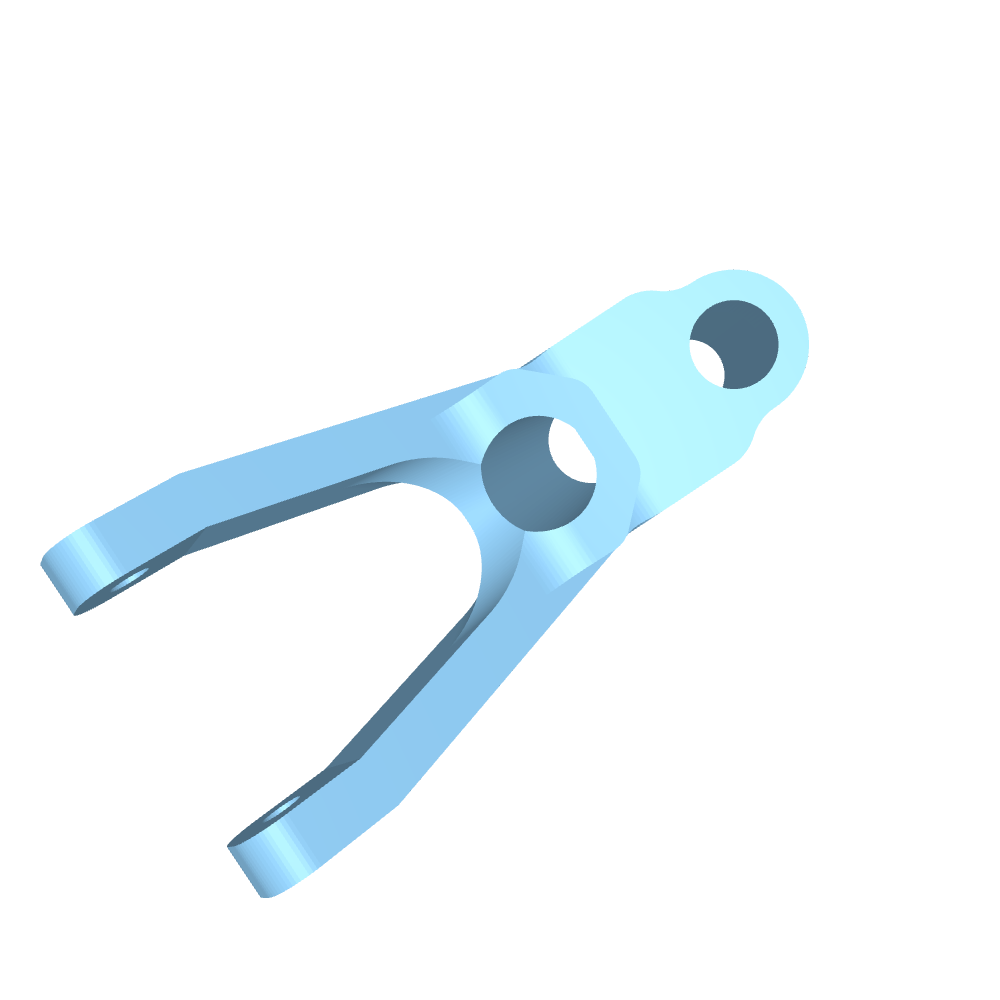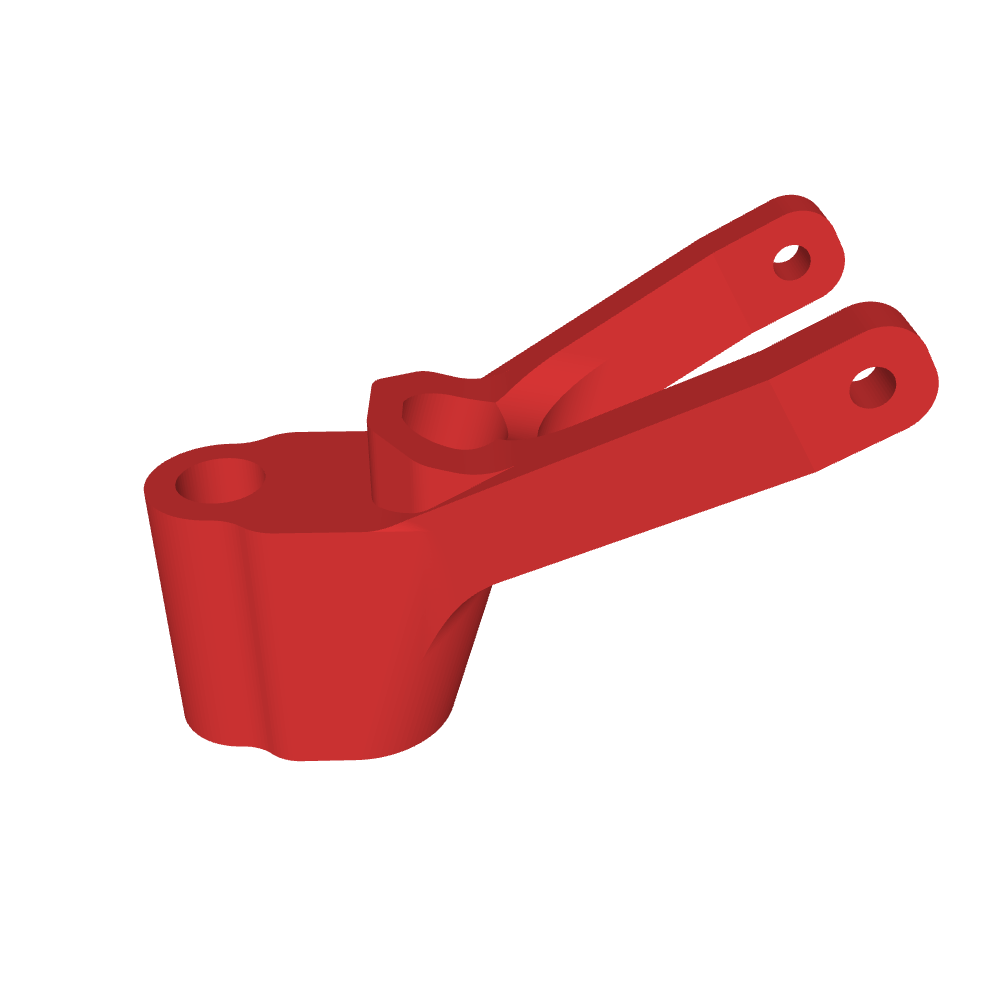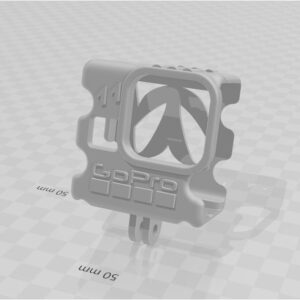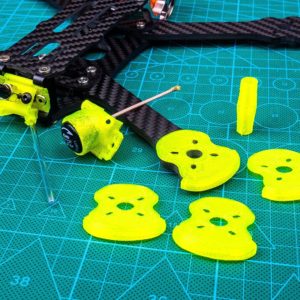GEPRC Cinelog 35 V2 Antenna Mount:
Secure 3D-Printed Solution for Optimal Signal ReceptionEnhanced Antenna Placement for the Cinelog 35 V2
The GEPRC Cinelog 35 V2 is a high-performance FPV drone built to deliver stable, low-latency video and precise flight control. A properly positioned antenna ensures reliable signal reception and extends range, making the antenna mount a critical part of the drone setup. Our 3D-printed antenna mount provides a secure and optimized position for antennas, ensuring minimal interference and maximum signal quality. Using Klipper-based printers and premium imported filament, this mount offers a lightweight and durable solution to keep your antenna firmly in place.
Why Use a 3D-Printed Antenna Mount for the Cinelog 35 V2?
1. Improved Signal Reception
Our antenna mount is designed to keep antennas oriented correctly, improving signal strength and reducing dropouts during long-range flights.
2. Secure and Stable Mounting
The 3D-printed mount prevents antennas from shifting or vibrating, ensuring a stable setup even during high-speed maneuvers.
3. Lightweight and Flight-Optimized
Designed for minimal weight impact, the antenna mount maintains the Cinelog 35 V2’s agility and battery efficiency, ensuring peak performance.
4. Durable and Impact-Resistant
Made from premium filament, the mount can withstand impacts and harsh flying conditions, protecting your antennas in case of crashes.
Materials We Use: Superior Imported Filament
We understand the importance of using the right material to print drone parts. We rely on premium imported filament such as:
- TPU (Thermoplastic Polyurethane 99 perc orders): Ideal for vibration absorption and flexibility, ensuring cameras stay secure even in extreme flight conditions.
- PETG: Provides excellent impact resistance, UV stability, and durability, making it a top choice for outdoor use.
- Nylon: Best suited for high-strength applications, ensuring the mount stays intact during crashes or high-speed impacts.
How We Print the Perfect Cam Plate Using Klipper-Based Printers
With Klipper firmware and advanced slicing techniques, our printers achieve:
- Layer precision down to 0.16mm for smoother prints with minimal post-processing.
- Fast print speeds without compromising on dimensional accuracy.
- Adaptive cooling profiles to prevent warping and ensure consistent performance.
- Seamless printing of complex geometries, thanks to Klipper’s multi-microcontroller support.
3D Printing Service (TPU) Specifications and Features:
TPU (Thermoplastic polyurethane) is a soft flexible material, Common uses for a material like TPU include, medical supplies, seals, automotive components, and household appliances, this is down to the material having a very flexible and elastic-like use. TPU has a melting point of 225 degrees to 235 degrees however 230 degrees is normally a stable temperature to print with. Another great advantage of this material is that it does not produce nasty emissions. Below are some key points when printing with TPU.
- Extremely flexible
- Lightweight
- Durable
- Non-soluble
- Heated bed required
Read More About Lipo Batteries by clicking the link below:
https://oscarliang.com/fpv-drone-guide/
Checkout our Frames Collection by clicking the link below:
https://thefpvproject.com/product-category/frames/
1S = 1 cell = 3.7V
2S = 2 cells = 7.4V
3S = 3 cells = 11.1V
4S = 4 cells = 14.8V
5S = 5 cells = 18.5V
6S = 6 cells = 22.2V
For example, we call a 14.8V battery a “4-cell” or “4S” battery.
LiPo battery is designed to operate within a safe voltage range, from 3V to 4.2V. Discharging below 3V could cause irreversible performance loss and even damage to the battery. Overcharging above 4.2V could be dangerous and eventually cause a fire.
However, it’s advisable to stop discharging when it reaches 3.5V for battery health reasons. For example for a 3S Lipo, the max voltage is 12.6V, and you should land when the voltage reaches 10.5V (at 3.5V per cell).










Reviews
There are no reviews yet.